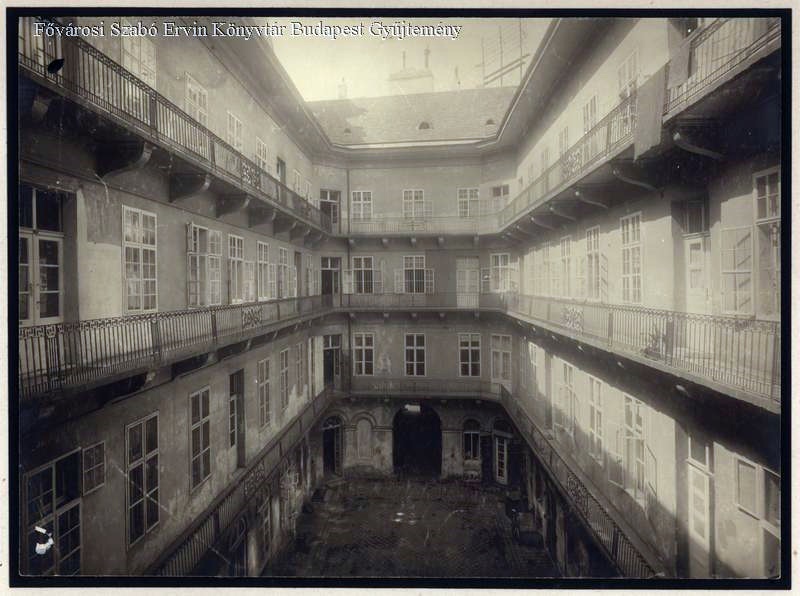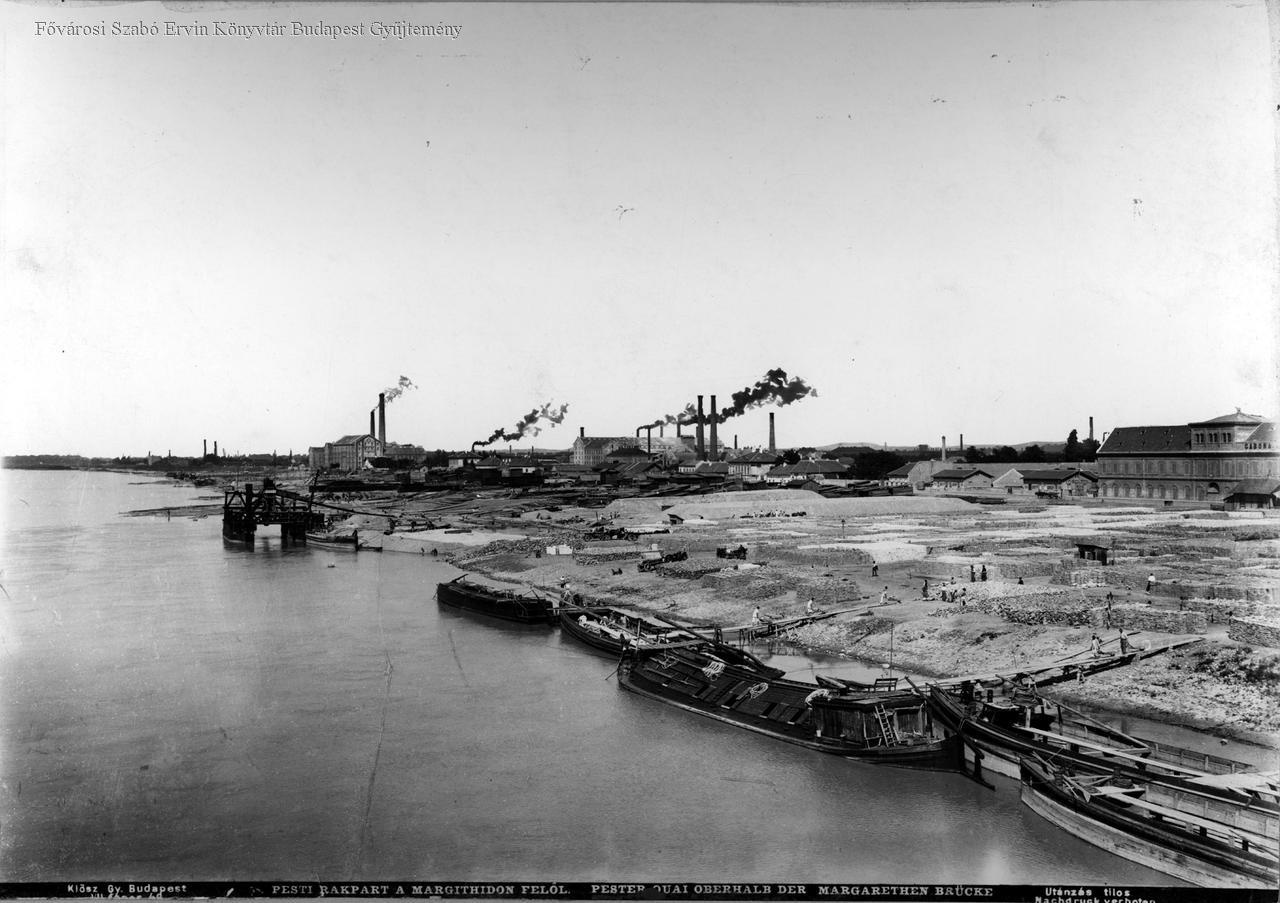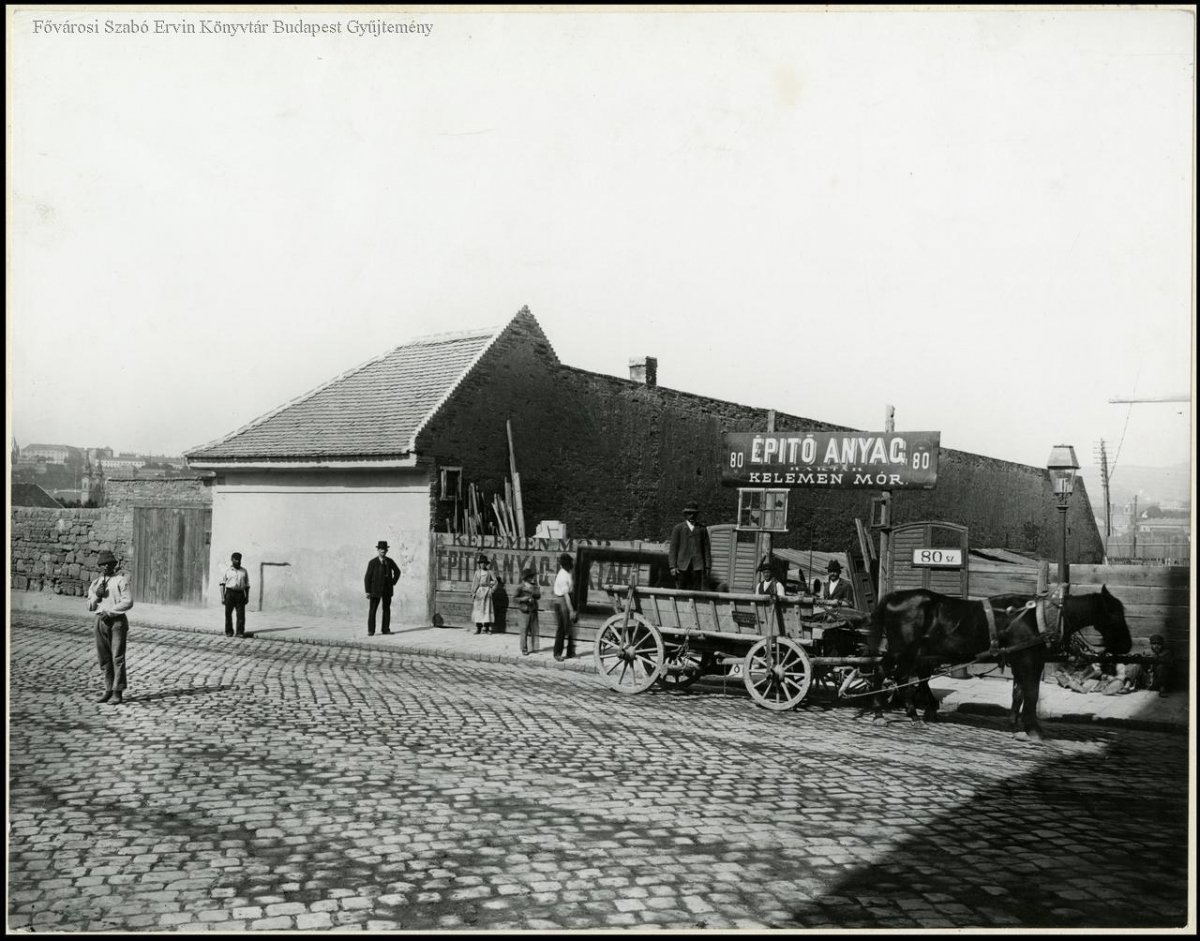Pest was not a big city according to today's concepts, it was divided into six major districts, Inner City, Lipótváros, Terézváros and Józsefváros, as well as Ferencváros and the outskirts, which actually meant Kőbánya. The built-up area of the city - excluding Kőbánya - barely extended beyond today's Outer Ring Road, the line of which was designated at the time of the city regulation.
There were a total of 5,699 buildings in the entire city, and according to statistics, a total of 277 buildings were erected in 1872, although 51 were demolished, and a total of 6,873 rooms were created in 1872. Pest had a total of 83,000 residential rooms at that time, in 1872 most new rooms were built in Terézváros and the fewest in Kőbánya. The poorer families usually lived in one room, in worse cases, several families shared one room, so the number of rooms was actually more important than the number of new apartments, although 2987 kitchens were built for the above 6873 rooms.

Pest residential building with many apartments and rooms opening onto the courtyard at 8 Mária Valéria Street in the 1890s (Photo: FSZEK Budapest Collection)
Statistician József Kőrösi describes this in a very vivid way in his work entitled Constructions in Pest in 1872 [Az 1872. évi pesti építkezések]:
"This large-scale proliferation of rooms is as surprising as it is a welcome phenomenon. This testifies either to the continuous growth of the city or to the more comfortable and healthier living conditions of the population. Those who know the local conditions will hardly be willing to attribute a high probability to the latter possibility, in fact, everyday experience leads me to admit that, on the contrary, our living conditions are becoming more unbearable year by year, and the rent is constantly becoming more expensive."
Although all city leaders considered it to be avoided, basement apartments were still built at that time, a total of 530 rooms were built as basement apartments, the number and proportion of which not only decreased but also increased. In the case of the street- and courtyard-facing rooms, the latter predominated, 3,119 rooms were built facing the courtyard.
.jpg)
Pest was burning with a construction fever in the last third of the 19th century, not only residential buildings but also other buildings, such as churches, were built one after the other (Photo: FSZEK Budapest Collection)
30 per cent of the investments fell on Terézváros, 24 per cent on Józsefváros and 9 per cent on Ferencváros. The most expensive buildings were built in Lipótváros and the cheapest in Ferencváros.
Of course, not only residential buildings but important public institutions were also built, according to the cited study by József Kőrösi, these were the most important constructions.
"...private residences: 9. Miklósy's temporary theatre on István Square; 10. the Veterans home built on Külső-Soroksári Road; 11. military barracks, mortuary and treatment buildings built along Üllői Road; 12. the completed Thonet Brothers' and 13. the new »Lloyd« ornate buildings; 14. the lower Kassa-Oderberg railway is ready, and 15. the management palace of the Alföld-Fiume railway under construction on the upper embankment lots; 16. the palace of the Eastern Railway under construction in Hold Street; 17. the united capital savings bank at the corner of Dorottya Wurm and Mária Valéria Streets; 18. the ornate four-story palaces of the first savings bank in Hungary, built on the "2 pistols" lot on Széna Square; 19. the one-story building of the Kőbánya Savings Bank in Kőbánya; 20. Samu Batizfalvi's medical institution on the City Park Alley; 21. Hungarian royal tobacco exchange office building on Rigó Street in Józsefváros; 22. Hungarian royal military equipment warehouse on the corner of Víg and József Streets, etc.”
In general, company constructions meant not only offices, but apartments were also created in the palaces under construction, for the leading officials of the given company, but it was also not uncommon for these buildings to have rental apartments as well.
The construction costs in 1872 (this includes shops, outbuildings and everything else) amounted to 14,128,320 HUF, which is almost three times the construction cost of the Margit Bridge, equivalent to 56.3 billion HUF at today's prices. 13,151,410 HUF was spent on residential buildings, the remaining amount of less than 1 million HUF went to workshops and other non-residential buildings. However, this cannot be compared to today's costs, since the wages and the price of building materials were quite different then.

At the end of the 19th century, there were huge construction material farms north of Margit Bridge (Photo: FSZEK Budapest Collection)
According to statistics, construction costs rose in Pest at that time, by 9.7 per cent. What does this mean for wages and building materials? Among the building materials, the price of "hard base stone" rose from 28 to 30 HUF, and the price of 1,000 bricks rose from 30 to 34 HUF, while the price of other building materials did not change significantly.
In terms of wages, the stonemasons earned the most, as their daily wage was 4 HUF, but this did not increase compared to 1871. The daily wages of masons rose from 2 forints 20 krajcár to 2 forints 30 krajcár, and the wages of day labourers also increased by 10 krajcár, to 1 forint 20 krajcár. (One forint with the Austrian value of 1872 is worth 3,986 forints today, i.e. a day labourer received barely 4,000 forints at today's prices.)
Cover photo: The building materials factory at 80 Nádor Street in the 1890s (Photo: FSZEK Budapest Collection)




































Hozzászólások
Log in or register to comment!
Login Registration